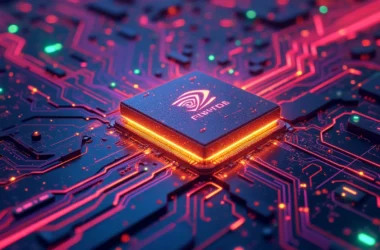Table of Contents Show
From its convoluted non-profit-for-profit structure to the brief ouster and return of its CEO, there is not much about OpenAI that’s typical.
The startup’s latest funding round, which would reportedly value OpenAI at a whopping $103 billion, is a case in point. According to The Wall Street Journal, OpenAI is in talks to raise several billion dollars in a new funding round. In addition to traditional VC investors—with Thrive Capital reportedly contributing $1 billion to lead the round—a who’s who of Big Tech powers such as Apple and Nvidia may apparently also join the funding party.
Of course, OpenAI already has a very prominent Big Tech heavyweight in its corner: Microsoft, which invested $13 billion in the ChatGPT maker less than two years ago. According to the recent reports, Microsoft is also considering investing in the current round (though it’s not clear if the investment would be in cash or cloud computing credits).
The string of questions all of this raises is enough to tie up anyone’s tongue. Is there any evidence that OpenAI’s business can justify all this investment? Why are all these tech companies piling in? Can they get any return from OpenAI given its profit-capped structure? And isn’t the tech industry under intense scrutiny from antitrust regulators who might look askance at such concentration?
As the OpenAI funding mega deal moves closer to completion, some of the answers to the questions will likely start to come into focus. In the meantime, here are some key points to consider if you’re trying to get a grasp of what’s happening.
Why does OpenAI need more money?
OpenAI’s revenue is reportedly just over $3 billion, putting the potential new valuation at more than 30 times the money it brings in. Most of its revenue comes from enterprise sales of ChatGPT, with very little coming from individual consumer subscriptions to the tool, and OpenAI is far from profitable, a person familiar with the company told Fortune.
Work inside OpenAI is ongoing to game out ways to monetize its tools beyond sales to large enterprise customers. Advertising within results given by ChatGPT is one option being actively worked on, according to the person familiar with the matter. Another is creating versions of the chatbot that are packaged for specific needs, like travel, and sold that way to consumers or large customers, the person added.
Still, the fact that OpenAI is seeking out new investment suggests that it’s rapidly burning through the billions of dollars it’s raised in recent years. And given the ever-escalating costs of training advanced AI models like OpenAI’s widely anticipated GPT 5, as well as the costs of powering AI services, the need for cash is ever present. Sam Altman has said he needs $7 trillion for a separate chip manufacturing venture to power his AI dreams.
So what’s in it for investors?
Should OpenAI get to a point of profitability at some point, or go public, there is a world in which investors would be paid back well for their backing of OpenAI. Given the amount of the valuation, it’s likely the number is based more on expectations, hope, than anything concrete in today’s income statement.
What investors definitely get in return for any future success of OpenAI is opaque. As with Microsoft’s initial investment, new investors like Apple or Nvidia likely get a stake in future profits held by a separate entity operated by OpenAI. OpenAI trades in profit participation units, a form of equity, and the company is many entities in one: a nonprofit arm is in control of a for-profit arm, which itself has control of a holding company, which controls another for-profit entity, and that entity is what Microsoft is technically invested in. (Confused yet? You’re not alone).
Under the terms of Microsoft’s 2023 deal with OpenAI, Microsoft gets first dibs over other investors. As Fortune reported at the time 75% of OpenAI’s profits will flow directly to Microsoft until the sum that Microsoft invested (a not trivial $13 billion) is reached.
All of this is to say, that for some the tech companies reportedly investing, the near-term motivation is probably less financial than it is strategic—basically a way to stay close to the company that started the generative AI craze and to ensure access to its technology. Apple is already using ChatGPT as a basis for some of its upcoming offerings in Apple Intelligence—something Apple is reportedly not paying OpenAI for.
But wait, doesn’t OpenAI have a cap on profits?
In 2019, before OpenAI had even released ChatGPT, the company said it was creating a for-profit segment of the company in order to sustain the costly AI work it was doing. However, the initial round of investors would have returns limited to 100x their initial investment, no matter how wildly successful OpenAI might become (an investment of $1 million dollars, in other words, could not see a return of more than $100 million). OpenAI said at the time that it expected “this multiple to be lower for future rounds,” meaning later investors would have further limits put on their possible returns. Returns outside of the cap are set to go to the non-profit arm of OpenAI.
That is, unless and until OpenAI achieves artificial general intelligence, or AGI, which the company loosely defines as “AI systems that are generally smarter than humans.” Should OpenAI hit this hypothetical milestone, it’s possible that investors could be left with no return on their investment when it comes to AGI. Any system that comes of a purported AGI technology is outside OpenAI’s current licensing structure, and therefore outside the terms of any current investor deals. “Our structure gives us flexibility for how to create a return in the long term, but we hope to figure that out only once we’ve created safe AGI,” the company wrote in 2019. Changes to the “capped profit” structure may already be on the way in an effort to keep investors happy. And it’s possible that the current funding negotiations could include “post-AGI” licensing terms.
Why would Microsoft let rivals like Apple barge into its special relationship with OpenAI?
As scrutiny of OpenAI has increased, so has its relationship with Microsoft as its biggest backer. The messy ouster of Altman late last year effectively undid work by Microsoft leaders to keep their dealings with OpenAI outside regulatory scrutiny. Microsoft has been the target of antitrust regulators in the past, and leaders were keen to avoid more entanglements. Now, regulators in the U.S. and UK are reportedly investigating the two companies’ ties. Since then, Microsoft CEO Satya Nadella has been sure to talk up his company’s independent AI work and research, even listing OpenAI as a direct competitor.
Participating in a funding round for OpenAI that includes other of the world’s biggest tech companies would further Microsoft’s aim to show itself as more hands-off when it comes to the company.
For OpenAI meanwhile, bringing on other Big Tech investors could offer some much needed diversification. Microsoft’s recent moves to build up its own AI capabilities, including hiring the founders of Inflection AI and building its own in-house LLMs, is all the evidence OpenAI needs to understand the risk of being too reliant on Microsoft.
Whether any of these machinations would pass muster with regulators of course is a big unknown. In July, Apple and Microsoft both gave up plans to take “observer” seats on OpenAI’s board, underscoring the cautious approach the companies are taking while they’re under the regulatory microscope. That said, U.S. presidential elections are only months away, and a change in administration could potentially change the government’s view of Big Tech and AI.
Recommended reading:
In our new special issue, a Wall Street legend gets a radical makeover, a tale of crypto iniquity, misbehaving poultry royalty, and more.
Read the stories.










